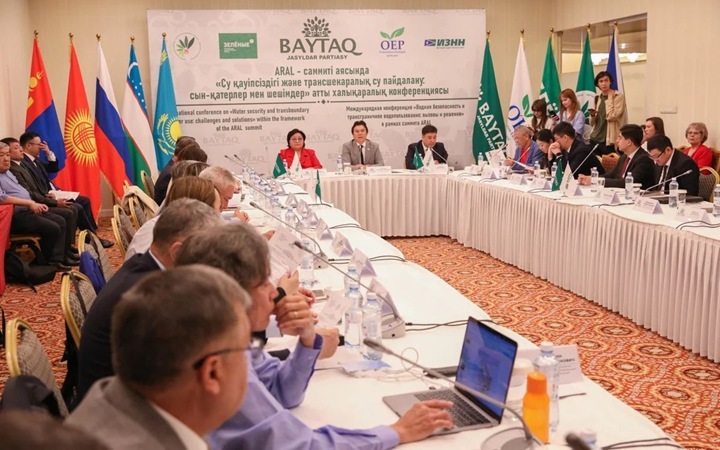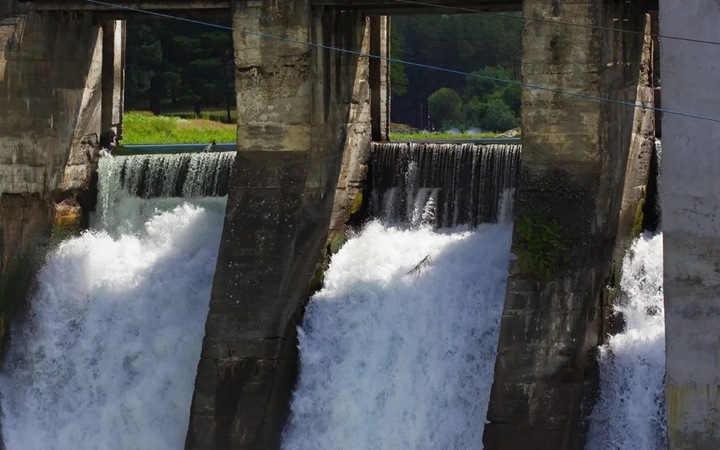Kokaral dam is being reconstructed to save the Aral Sea
Prospects for the further revival of the Northern Aral Sea became the main topic of the meeting of the Minister of Water Resources and Irrigation of Kazakhstan Nurzhan Nurzhigitov with the World Bank Regional Director for Europe and Central Asia Sameh Vahba. The negotiations took place directly at the Kokaral dam in the Kyzylorda region, a key facility for the rescue of the reservoir.

The parties discussed the implementation of the second phase of the large-scale project, the feasibility study of which is currently being completed by the Kazakh Ministry of Water Resources and Irrigation. It is planned not only to reconstruct the Kokaral dam, but also to raise the sea level to 44 meters along the Baltic system. In addition, the project provides for the construction of a waterworks near the village of Amanotkel, which will stabilize water resources in the Akshatau and Kamystybas lake systems of the Aral region.
As a result of these measures, it is expected that the water surface area of the Northern Aral Sea will increase to 3,913 square kilometers, and the volume of water will reach 34 cubic kilometers. According to experts, the process of filling the sea to the design marks will take from four to five years.
The choice of the current option for preserving the sea is not accidental. According to the ministry, it is based on a thorough analysis of the average annual volumes of water inflow along the Syr Darya River basin for more than a century (from 1913 to 2019) and the physical parameters of reservoirs. The initiative to raise and strengthen the Kokaral dam was also previously voiced by former Minister of Land Reclamation and Water Resources Nariman Kypshakbayev. To find the best solution, a series of meetings has been held since the beginning of this year with the participation of representatives of the akimat of Kyzylorda region and Aral region. Meetings of specialists of the relevant ministry with the public and local residents have been held several times. As part of the recent working trip of Minister Nurzhan Nurzhigitov to the region, a meeting was held with citizens, attended by members of Parliament, designers, veterans of the water industry. The proposals of residents of the Aral district and the city of Aralsk were listened to and discussed at it. The chosen scenario is considered optimal in terms of the timing of implementation and taking into account the real hydrological situation in the Syrdarya basin.
The World Bank, in turn, expressed interest in further participation in the project of saving the Northern Aral Sea. The International Financial Organization has already allocated a grant for the development of feasibility studies. Regional Director Sameh Wahba, visiting the fish processing plant, noted the significant potential of the project to create jobs not only in fishing, but also in agriculture, animal husbandry and tourism. Thus, the initiative to restore the Aral Sea is able to give impetus to the economic development of the entire Kyzylorda region. The project is also of global importance, demonstrating the possibility of restoring entire ecosystems.
It is expected that the examination of the feasibility study developed by the Ministry will be received in December 2025.
The Northern Aral Conservation Project pursues complex goals: increasing the volume and improving the quality of water in the sea, restoring the Syrdarya River delta, reducing the removal of salt deposits from the dried-up bottom of the Aral Sea, improving the management of water resources of the Northern Aral Sea, the development of fisheries in the Kyzylorda region and, as a result, improving the living conditions of the local population.
The press service of the Ministry of Water Resources notes that the success of the first phase of the project serves as an inspiring example. According to its results, the volume of water in the Northern Aral increased by 42%, the salinity decreased almost four times, which made it possible to increase the annual volume of fish catch to 8 thousand tons. In addition, 870 square kilometers of the dried-up seabed were covered with water, which significantly reduced the wind removal of harmful salt deposits.


